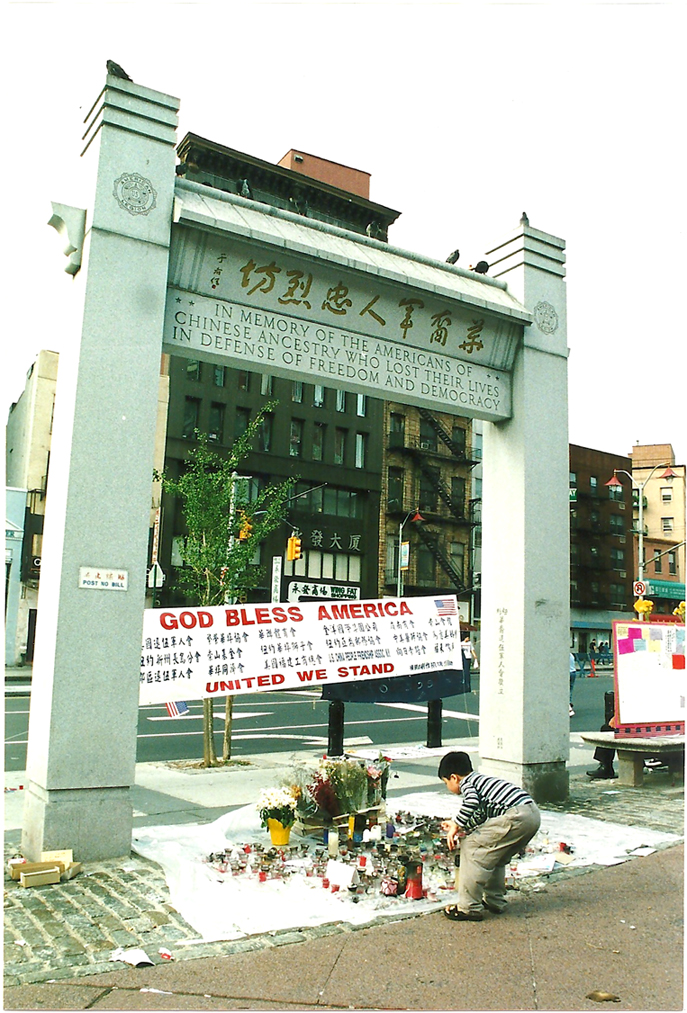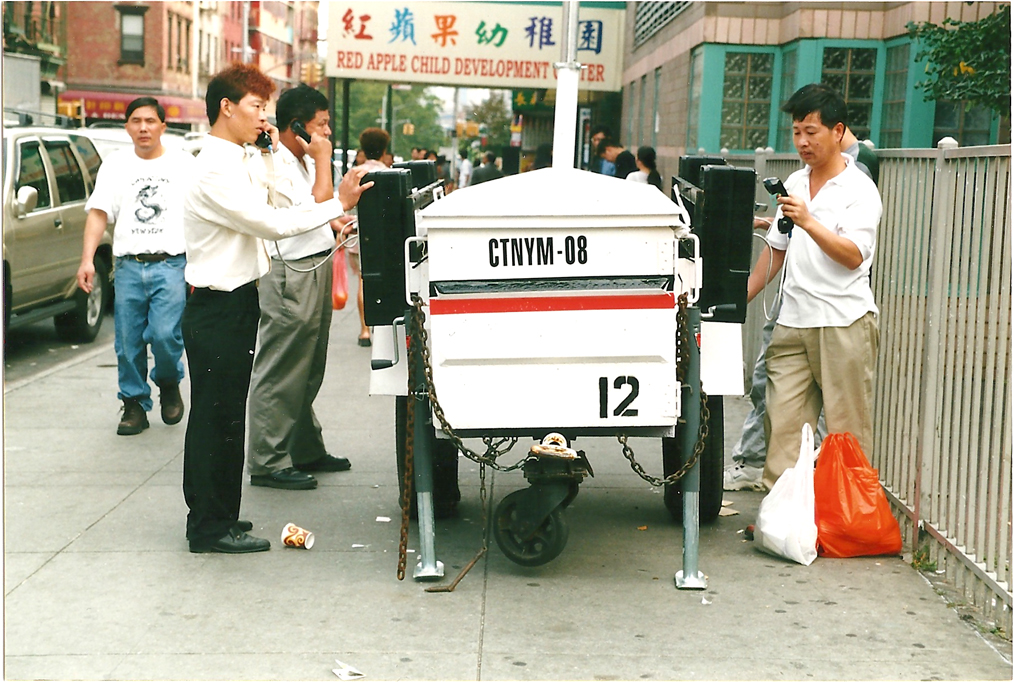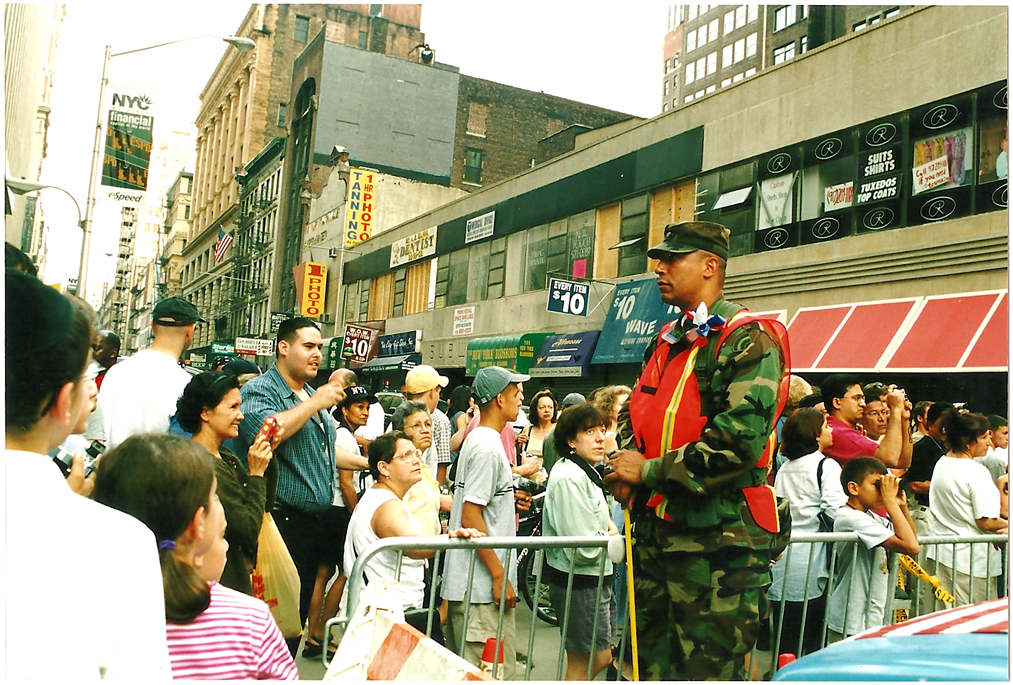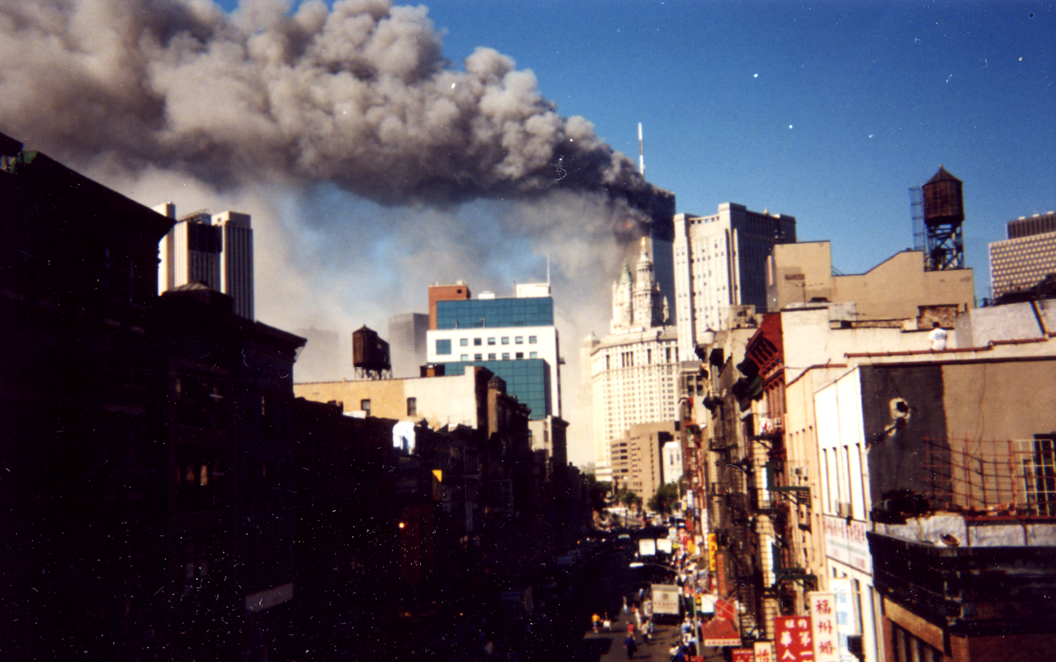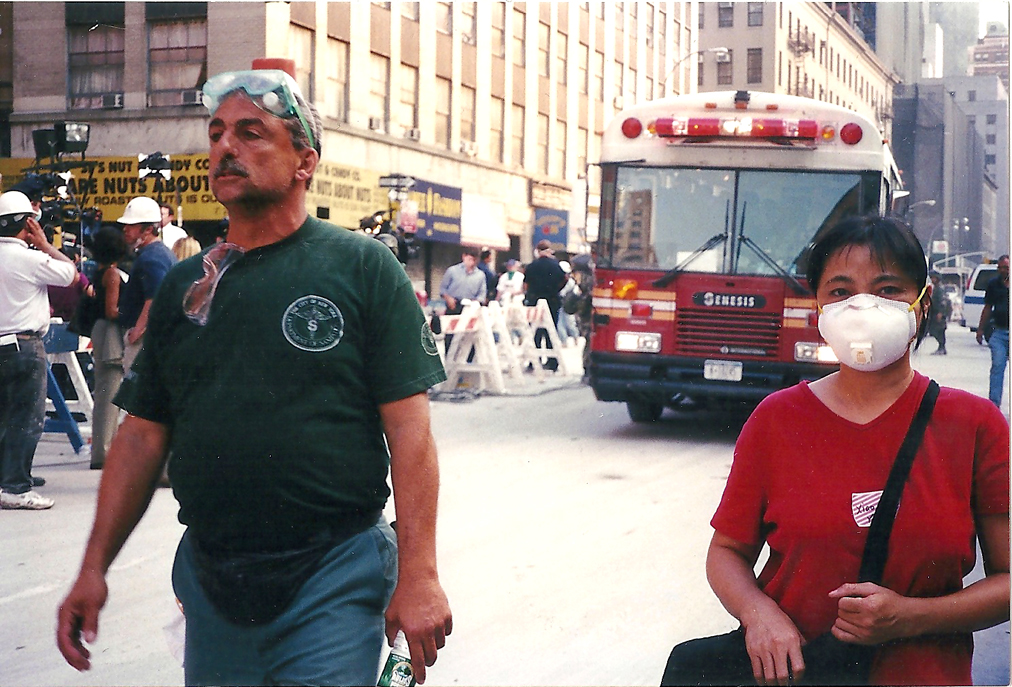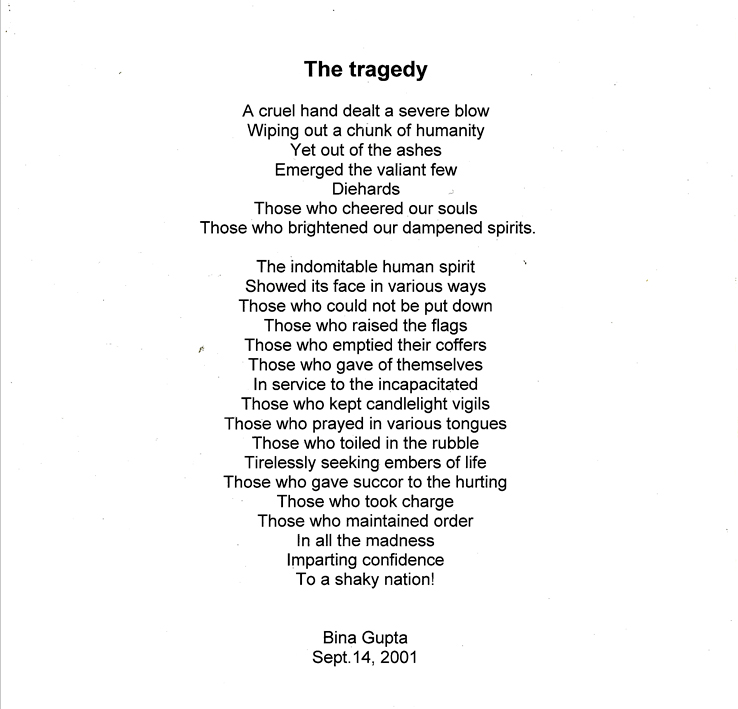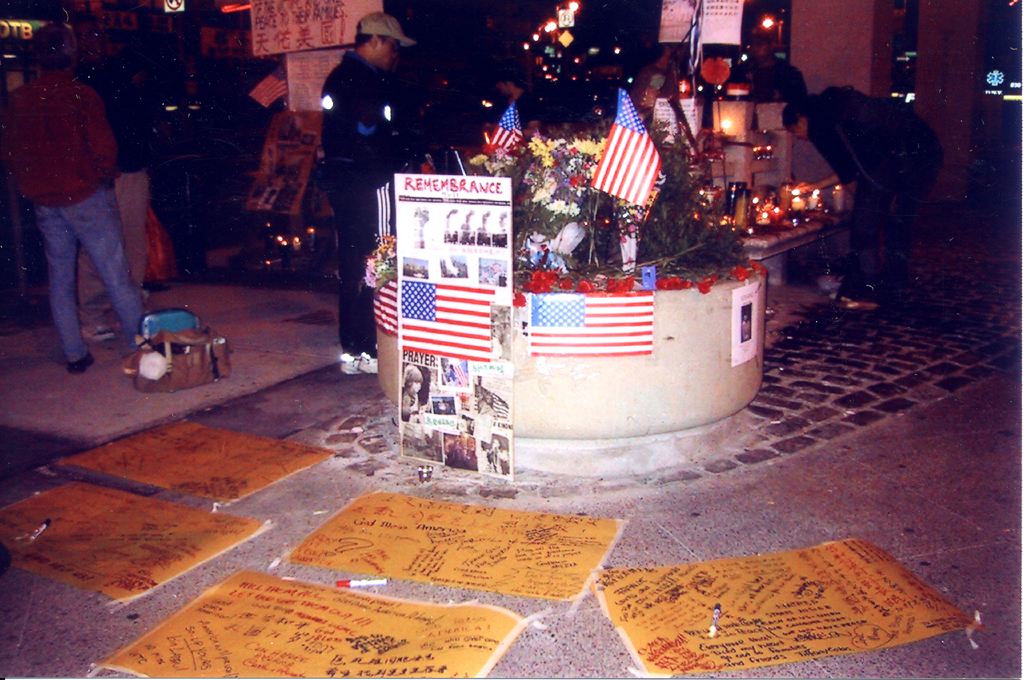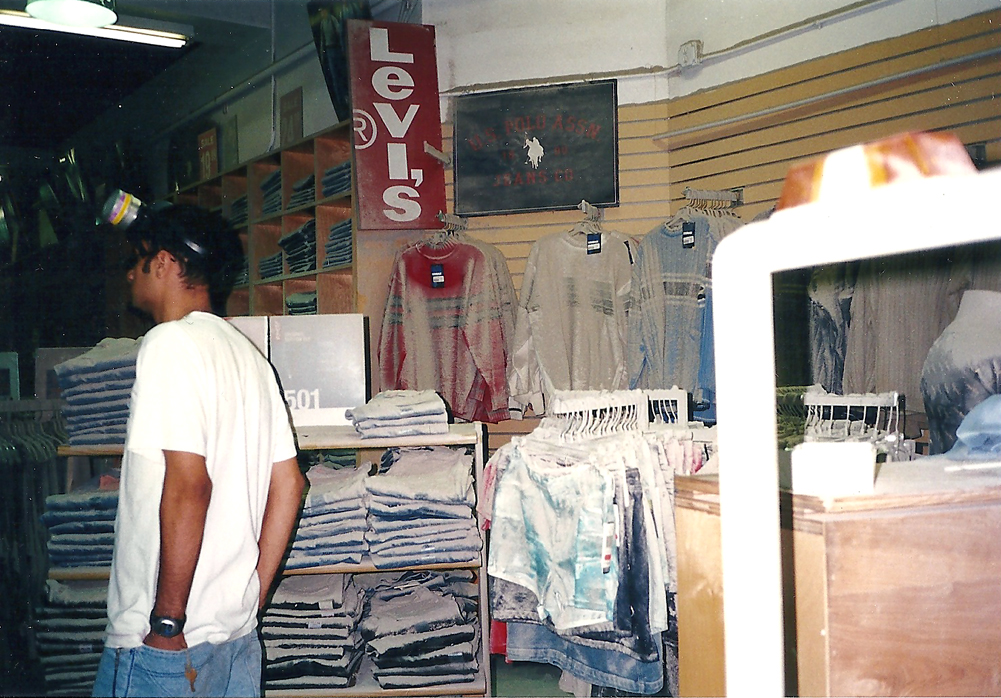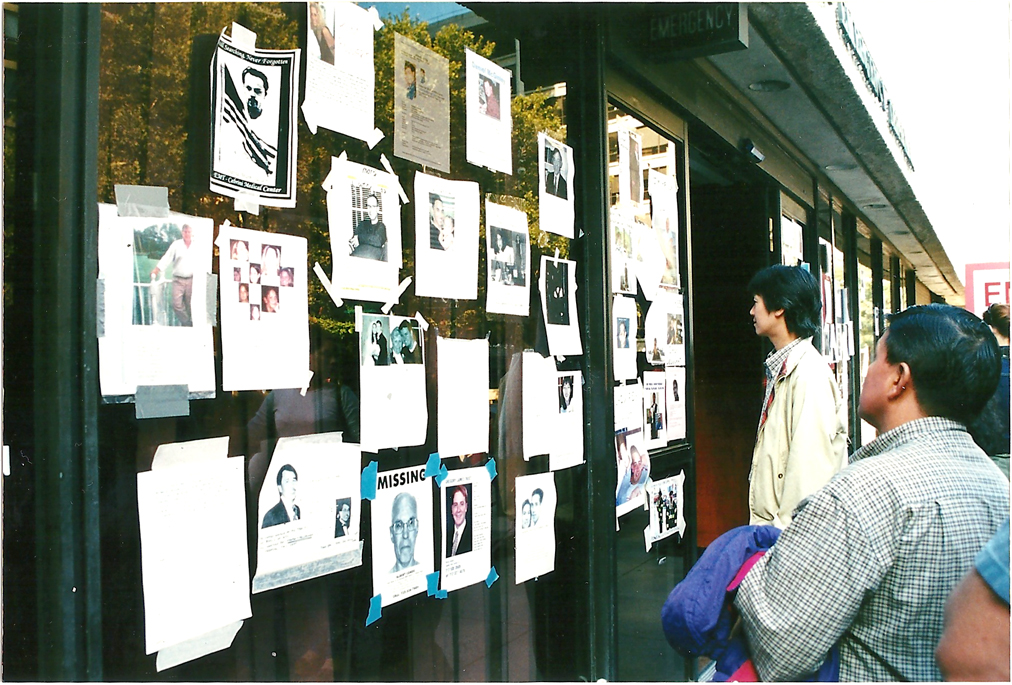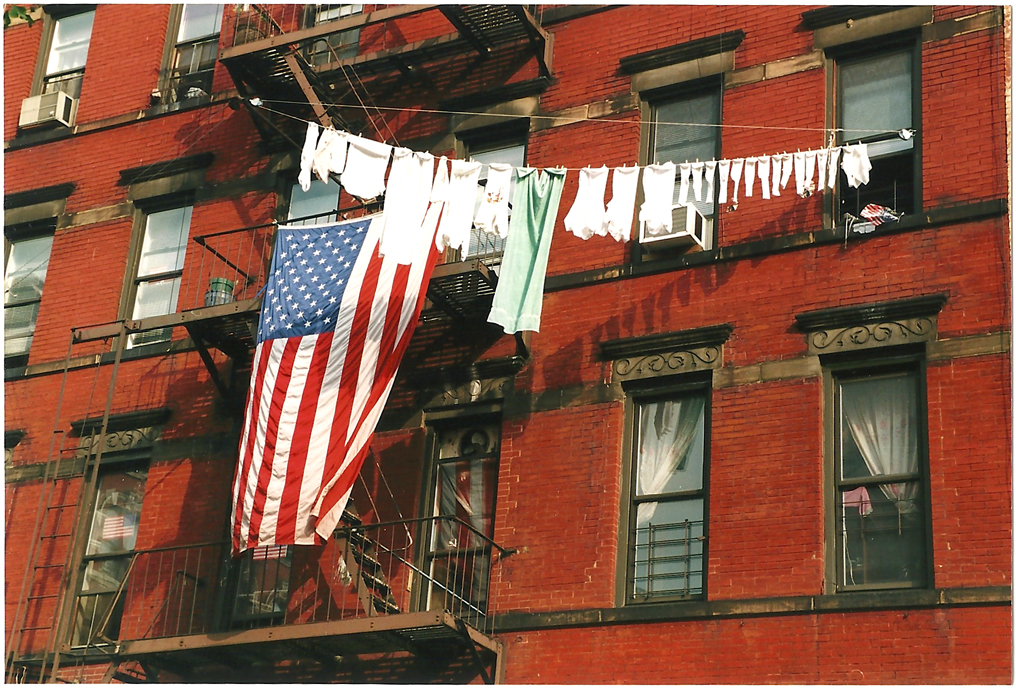Not long after the tragic events of September 11th, MOCA began collecting community photo-documentation, studies, reports, artwork, and ephemera related to its impact on Chinatown, a neighborhood just ten blocks from Ground Zero. In solemn (belated) remembrance, we offer a few photograph and poem submissions from MOCA’s Recovering Chinatown: The 9/11 Collection which document and reflect on this day and the ones following.
The second photograph, taken by Lia Chang, shows people using the portable payphone trailers that Verizon set up at 27 locations around Chinatown beginning on September 21, 2001. As a result of the September 11th attack, telephone service in the general area south of East Broadway was disrupted for nearly two months. This lack of phone service affected the ability of businesses to conduct daily operations, such as processing garment orders, restaurant take-out orders, medical prescriptions, and credit card transactions. As of October 15th, telephone service was still not completely restored on some major Chinatown streets. Due to their proximity to many of the key federal, state and city offices, various streets were completely or partially shut down repeatedly by authorities, particularly when the federal government issued terror warnings. During this period, Chinatown was in a state of siege. Barricades were erected, manned by the NYPD, New York State troopers, and National Guard. One such barricade south of Canal Street is shown in photograph 3. In oral histories, garment workers spoke about how the inability of vehicles to get in and out of Chinatown all but shut down the factories, leaving them without work and a pay check for weeks and in some cases months. The garment industry, a mainstay of many families’ livelihood, would never fully recover. Debris diminished air quality, covering shops in dust from the collapsed towers and causing some to wear protective goggles and masks. In the days following, family members posted flyers on makeshift missing person walls outside Mount Sinai Medical Center near Chinatown, and the community hung American flags and came together in candlelight vigils to mourn the members who were lost.
Courtesy of Lia Chang, Xiao Min Yu, Wai Lum William Man, Melmie Lee Young, and Bina Gupta, Museum of Chinese in America (MOCA) Recovering Chinatown: The 9/11 Collection.
To engage with more images, poems, documents, and oral history content, please visit MOCA’s Chinatown POV: Reflections on September 11th website.
